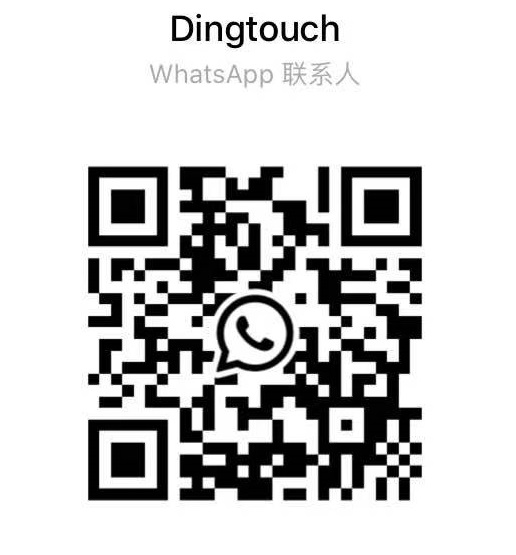News
How Do Touchscreen Display Modules Work in Modern Technology?
How Do touchscreen Display Modules Work in Modern Technology?
Content Menu
-
How Do touchscreen Display Modules Work?
-
Touch Sensor Activation
-
Controller Processing
-
Software Response
-
-
Types of touchscreen Technologies
-
Resistive touchscreen
-
Capacitive touchscreen
-
Projected Capacitive (P-Cap) touchscreen
-
Infrared (IR) touchscreens
-
Surface Acoustic Wave (SAW) touchscreen
-
-
Applications of touchscreen Display Modules
-
Advantages of touchscreen Display Modules
-
Frequently Asked Questions (FAQ)
-
What is the difference between resistive and capacitive touchscreen?
-
Can touchscreen display modules work with gloves?
-
What are the advantages of projected capacitive touchscreens?
-
How do infrared touchscreens detect touch?
-
What future technologies will improve touchscreen display modules?
-
touchscreen display modules have become ubiquitous in modern technology, seamlessly integrating visual displays and touch interaction into a single intuitive interface. From smartphones and tablets to industrial machinery and automotive systems, these modules enable direct and responsive user engagement.
This comprehensive guide explores how touchscreen display modules work, their core technologies, applications, advantages, and future innovations.
What Is a touchscreen Display Module?
A touchscreen display module combines a visual display panel with a touch-sensitive layer, enabling users to interact directly with a device by touching the screen.
Unlike traditional displays that merely show information, touchscreen modules detect and respond to inputs such as taps, swipes, and gestures, converting them into operational commands.
Typically, a touchscreen display module consists of three core components:
-
Display Panel: Renders images, videos, and interfaces.
-
Touch Sensor: Detects the location and nature of the touch.
-
Controller: Processes touch signals and translates them into device instructions.
Together, these parts create an integrated system for seamless visual output and user input.
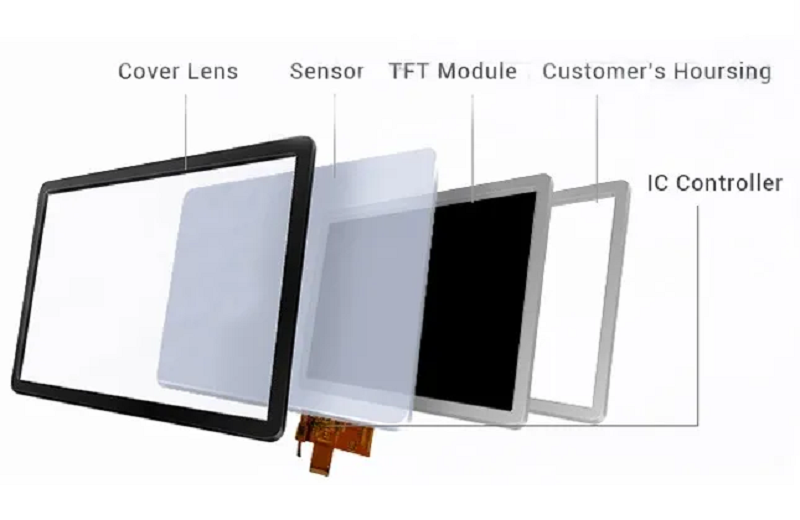
How Do touchscreen Display Modules Work?
The working principle centers around detecting changes in electrical properties caused by touch and translating these into actionable commands.
When a user touches the screen, the sensor detects changes in capacitance, resistance, or light beams, depending on the technology. These changes are sent to the controller, which processes and forwards commands to the device’s software to execute the appropriate response—whether it's opening an app, zooming in, or entering text.
Touch Sensor Activation
The touch sensor is sensitive to contact or proximity:
-
Capacitive screens detect changes in electrostatic fields caused by conductive objects like fingers.
-
Resistive screens register pressure that physically connects two conductive layers.
Controller Processing
The controller receives raw signals from the touch sensor, filters noise, calculates exact coordinates, and identifies gestures. It then converts this data into digital instructions understandable by the software.
Software Response
The software interprets the processed touch data and triggers the corresponding action—whether scrolling through a webpage, typing on a keyboard, or executing complex commands in specialized environments.
Types of touchscreen Technologies
Resistive Touchscreen
-
Made of two flexible, conductive layers separated by spacers.
-
Touching causes the layers to meet, changing resistance.
-
Operable with any object (finger, glove, stylus).
-
Common in industrial and rugged environments due to durability and flexibility.
Limitations: Lower clarity and sensitivity; usually single-touch only.
Capacitive Touchscreen
-
Detect touch by sensing a change in an electrostatic field.
-
Highly sensitive, multi-touch capable, and offer superior image clarity.
-
Widely used in consumer electronics like smartphones and tablets.
Note: Requires conductive input (like a human finger).
Projected Capacitive (P-Cap) Touchscreen
-
Advanced capacitive technology with a grid of electrodes.
-
Supports multi-touch and high-precision input.
-
Extremely durable and used in premium consumer devices and industrial applications.
Infrared (IR) Touchscreen
-
Utilize LED and photodetector arrays to form an invisible grid of light beams.
-
Detect touch by sensing disruptions in the beam pattern.
-
Suitable for large-format displays and environments requiring stylus or gloved operation.
Limitations: Sensitive to ambient light interference.
Surface Acoustic Wave (SAW) Touchscreen
-
Use ultrasonic waves transmitted across the screen surface.
-
Touch absorbs or reflects these waves, and sensors detect the disruption.
-
Provides excellent image clarity but can be affected by contaminants like dust or water.
Applications of Touchscreen Display Modules
Touchscreen modules are integrated across diverse industries, including:
-
Consumer Electronics: Smartphones, tablets, smartwatches, cameras.
-
Automotive Systems: In-vehicle infotainment and navigation screens.
-
Retail & Hospitality: Point-of-sale (POS) terminals, kiosks, self-check-in stations.
-
Industrial Control: Control panels for manufacturing, automation, and heavy equipment.
-
Medical Devices: Patient monitors, diagnostic tools, and surgical equipment interfaces.
Their intuitive operation, versatility, and efficiency drive their widespread adoption.
Advantages of Touchscreen Display Modules
-
Direct Interaction: Natural, intuitive operation without external devices.
-
Compact Design: Combines display and input, reducing device footprint.
-
Enhanced User Experience: Smooth responsiveness and multi-touch capability.
-
Versatility: Adaptable to various industries and use cases.
Future Trends and Innovations
Several exciting innovations are shaping the next generation of touchscreen modules:
-
Haptic Feedback Integration: Creating tactile sensations that simulate physical textures or button clicks.
-
Foldable and Flexible Displays: Allowing devices to bend and reshape dynamically.
-
Increased Responsiveness: Detecting lighter touches and complex gestures with minimal lag.
-
Enhanced Durability: With tougher, scratch-resistant, and water-resistant materials.
-
Advanced Gesture and 3D Touch Recognition: Supporting pressure-sensitive interactions and richer control experiences.
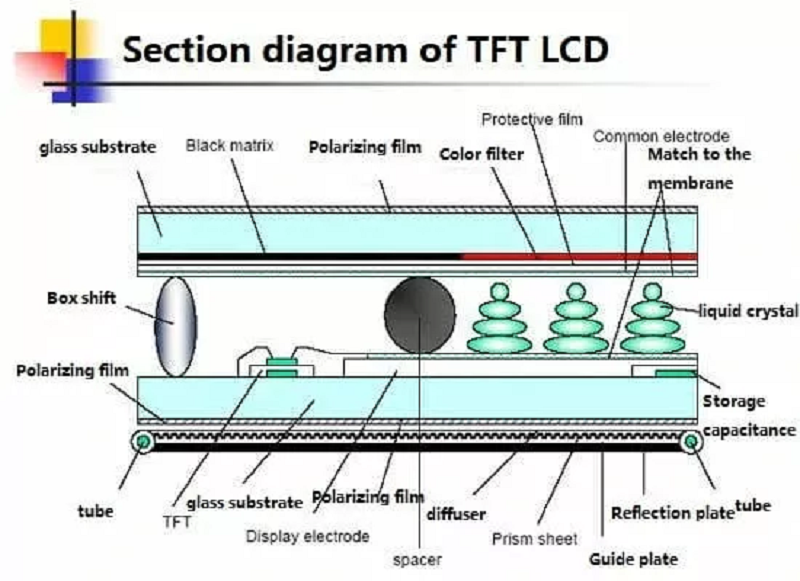
Conclusion
Touchscreen display modules are at the heart of modern digital interaction. By merging display output and intuitive touch input, they redefine how we engage with technology.
As new sensing methods, materials, and form factors emerge, touchscreen modules will become even more responsive, durable, and versatile—cementing their role as essential interfaces in a connected world.
Frequently Asked Questions (FAQ)
1. What is the difference between resistive and capacitive touchscreen?
-
Resistive touchscreens rely on pressure and can be operated by any object.
-
Capacitive touchscreens sense changes in electrostatic fields and require conductive input like a finger but offer better sensitivity and multi-touch support.
2. Can touchscreen display modules work with gloves?
-
Standard capacitive screens struggle with gloves, but specialized gloves or resistive screens allow effective gloved operation.
3. What are the advantages of projected capacitive touchscreens?
-
High precision, multi-touch capability, excellent clarity, and rugged durability.
4. How do infrared touchscreens detect touch?
-
By detecting the interruption of invisible infrared light beams crisscrossing the screen surface.
5. What future technologies will improve touchscreen display modules?
-
Haptic feedback, foldable displays, advanced gesture control, improved material durability, and 3D touch sensitivity.
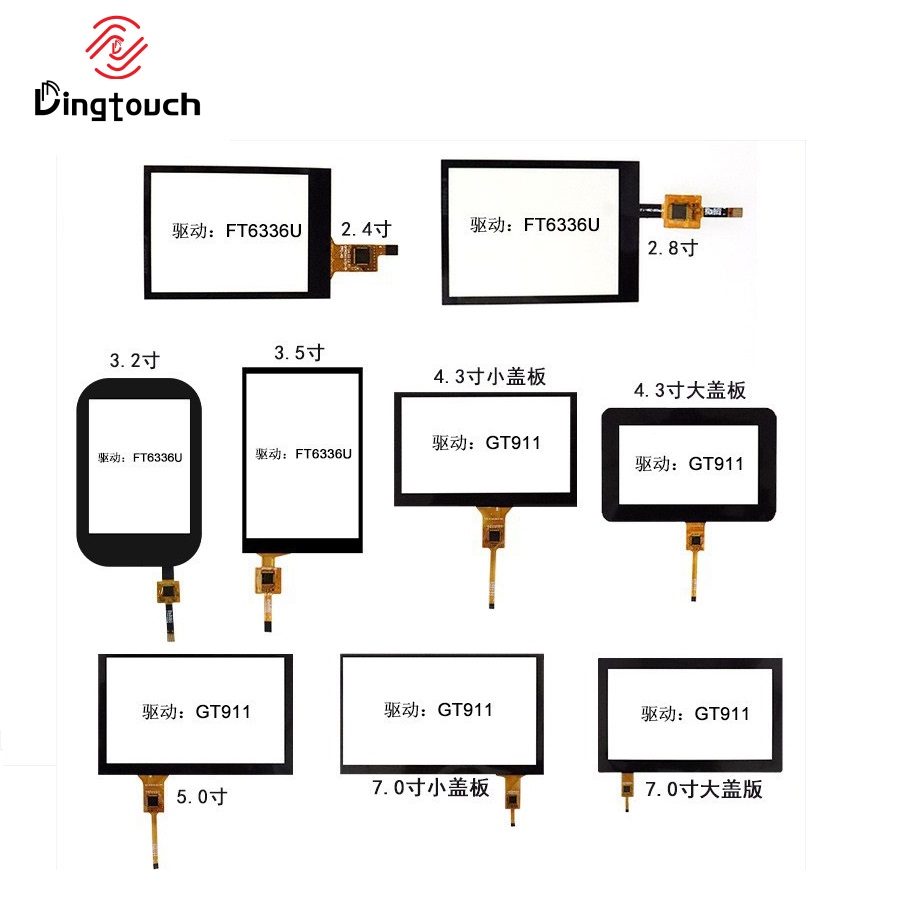



Ready to Build Your Outdoor Display Solution?
Get in touch with us at sales@szdingtouch.com. Our expert engineers will help you design a cost-effective, tailored solution to meet your project’s exact specifications.
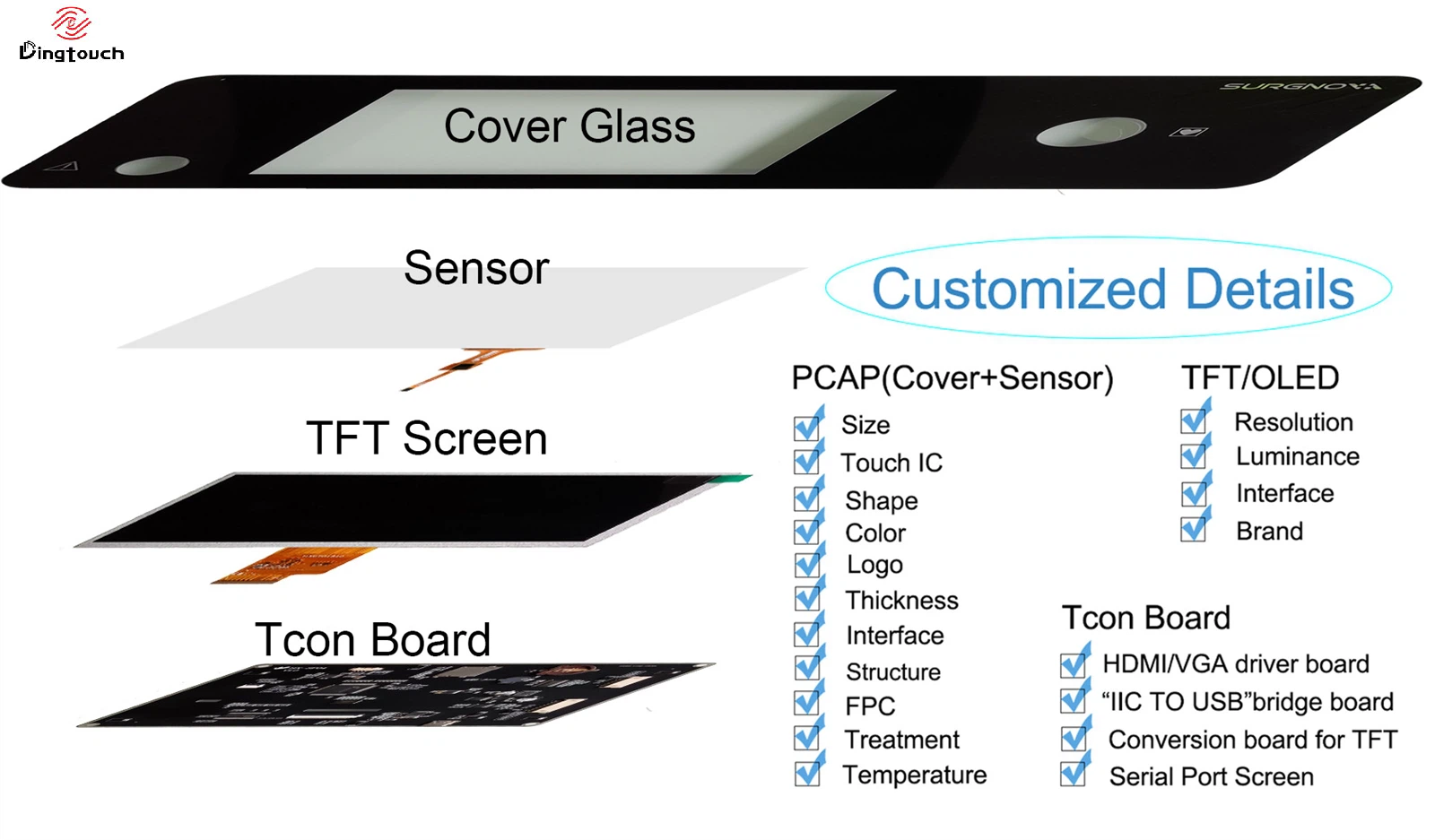
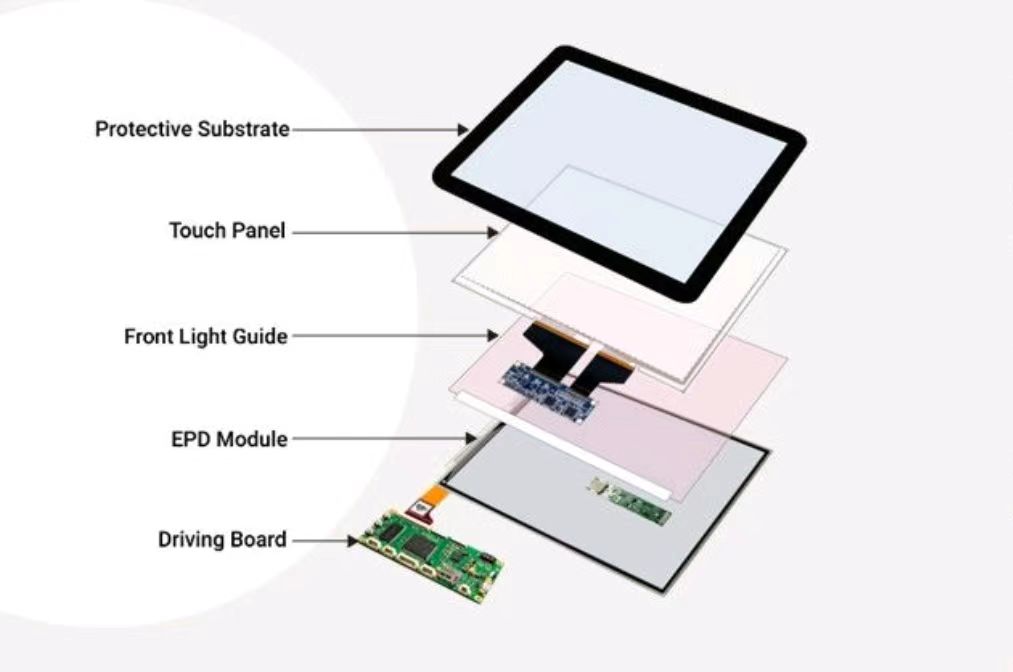
DINGTouch :Committed to continuous innovation and improvement of product quality to meet customers' high requirements and expectations.
DINGTouch is a manufacturer that provides high quality touch screen panels. Focus on the design, manufacturing and sales of touch screen panels, and are committed to providing customized solutions that satisfy customers.
DINGTouch: In the process of customizing touch screen panels, we focus on close cooperation and communication with customers. Understanding customers' needs and providing customized solutions will meet customers' individual needs. The company's products are favored by customers for their high quality and reliability, and provide them with the best Touchscreen panel solutions.
At DINGTOUCH, we are the world's leading touchscreen manufacturer, helping businesses around the world take advantage of this exciting technology. For more information, please visit the home page now.
Find the DINGTouch technical team to achieve the success of your company's new project.DINGTouch is a company specializing in the R&D and production of touch screen technology, headquartered in Shenzhen, China. As a professional touch screen supplier, DINGTouch is committed to providing high-quality, stable and reliable touch screen products to meet the diverse needs of customers. We continue to carry out technological innovation and product optimization to ensure that its touch screen products have good sensitivity, accuracy and durability.
In addition to the products themselves, we also focus on cooperation and communication with customers, and are committed to providing customized solutions and excellent after-sales services. Through continuous efforts to improve product quality and customer satisfaction, we have established a good reputation in the touchscreen industry and won widespread market recognition.

What DINGTOUCH can do:
• PCAP maximum size 65”
• Multi-touch (Touch screen can be customized to your needs.)
• Optical bonding service/air bonding
• LCD interface: HDMI/RGB/MIPI/LVDS/EDP, etc.
• PCAP interface: IIC/USB interface
• CTP can customize the cover glass surface treatment process AG (anti-glare), AR (anti-reflection), AF (anti-fingerprint), waterproof, and glove touch
• Supports 0.55 mm-12 mm coverslip touch.
• Support operating temperature: -40℃-90℃.
Dingtouch Industrial Capacitive Touch Screen Manufacturer
In conclusion, Dingtouch as a professional touch screen manufacturer with more than 10 years touch screen experience.We have many capacitive touch screen. Such as5 inch touch screen,7 inch touch screen,10.1inch touch screen,15 inch touch screen,15.6 inch touch screen,17 inch touch screen,18.5 inch touch screen,19 inch touch screen,21.5 inch touch screen,32 inch touch screen, However, we also welcome to customize your own touch screen . Contact our team today to learn what capacitive touch screen are best for our retail business needs.
Contact us NOW! sales@szdingtouch.com
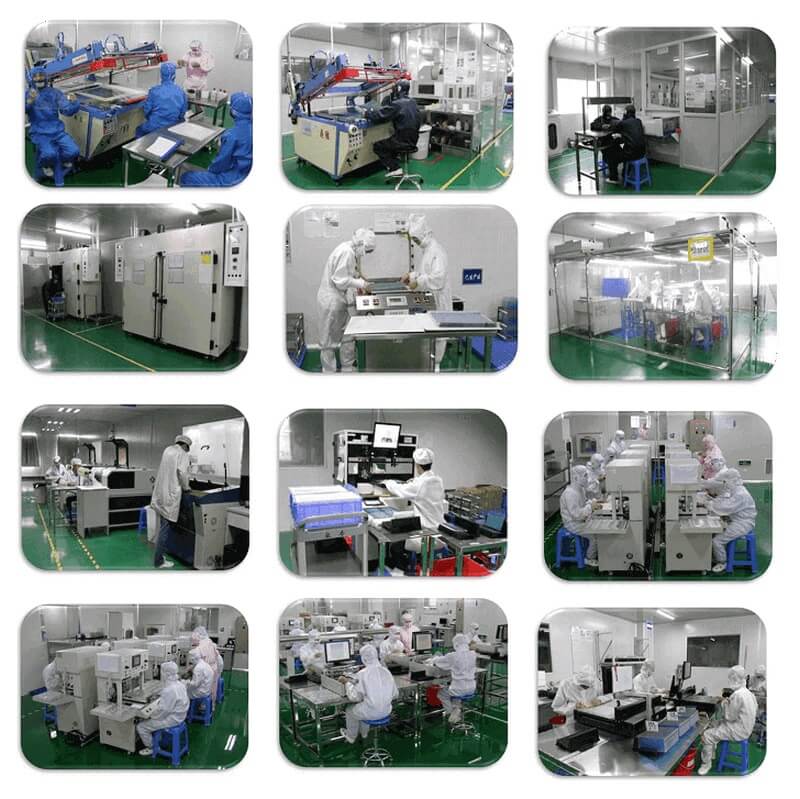
CATEGORIES
CONTACT US
Contact: Dingtouch
Phone: +8615815536116
Tel: +8615815536116
Email: sales@szdingtouch.com
Add: Building A, Bailu Plaza, No. 48, Gonghe Industrial Road, Gongle Community, Xixiang Street, Baoan District, Shenzhen,China. 518126
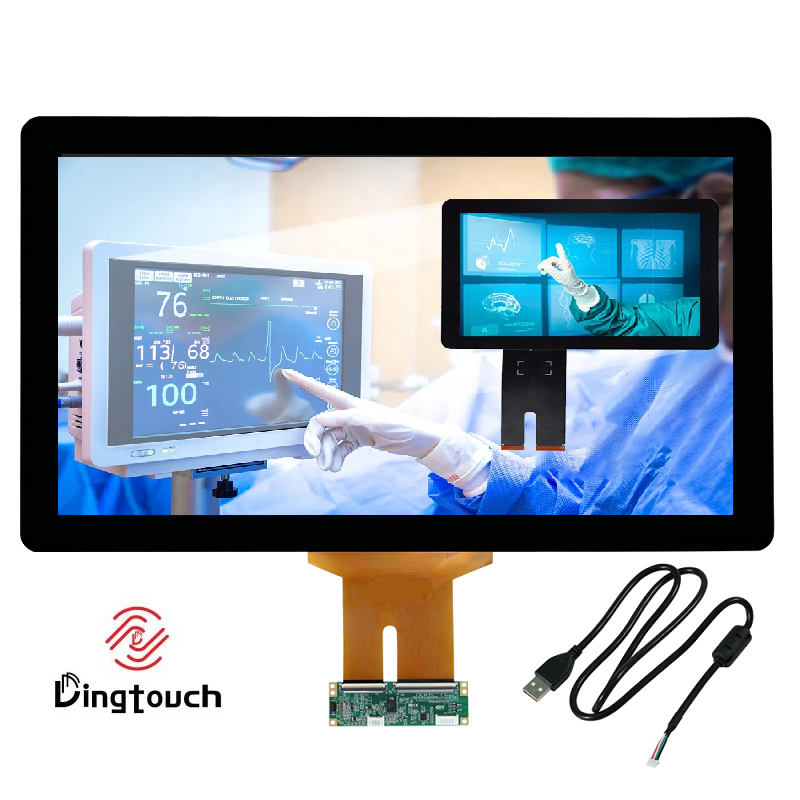


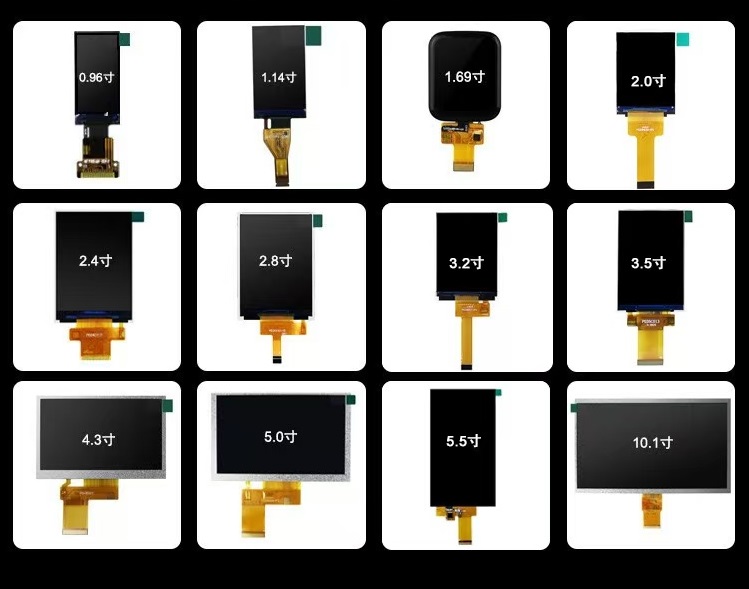

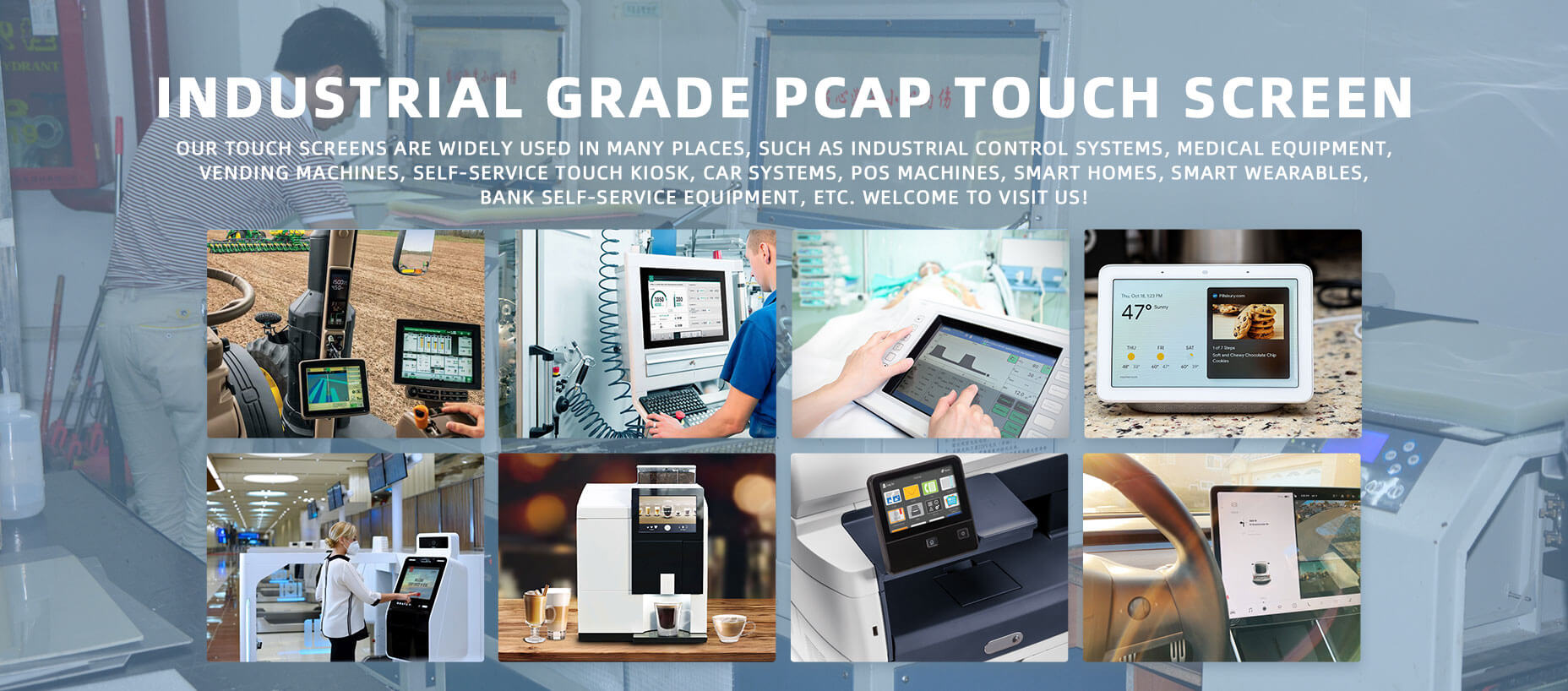
 Dingtouch
Dingtouch